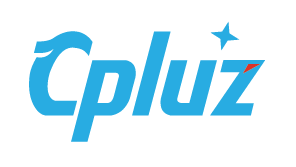In today’s digital world, website speed has become a crucial ranking factor for search engines like Google. A faster loading website not only provides a better user experience but also improves your search engine rankings. However, achieving faster hosting for your website involves more than just choosing a high-speed web host. In this comprehensive guide, we’ll walk you through various effective techniques to optimize your website for faster hosting.
1. **Choose the Right Web Host**
The foundation of a fast loading website starts with selecting the right web host. Look for a web host that offers fast and reliable performance, good uptime, and scalability as your website grows. Some popular options for high-speed web hosting include Cloudflare, Amazon Web Services (AWS), Google Cloud Platform, and Microsoft Azure.
2. **Optimize Your Images**
Images can significantly slow down a website due to their large file sizes. To optimize images for faster loading, compress them using tools like Adobe Photoshop or TinyPNG. Additionally, reduce the number of images on each page, and use appropriate image formats such as JPEG for photos and PNG for graphics.
3. **Minify CSS, JavaScript, and HTML**
Minifying your code means removing all unnecessary characters from your CSS, JavaScript, and HTML files without altering their functionality. This process reduces file size and speeds up the loading time of your web pages. You can use tools like Google’s Closure Compiler or YUI Compressor for minification.
4. **Enable Browser Caching**
Browser caching allows a user’s web browser to store copies of your website files, such as HTML, CSS, and JavaScript, on their computer. This way, when the user revisits your site, their browser can load the pages faster since it doesn’t need to download these files again from your server. To enable browser caching, set an appropriate cache-control header in your .htaccess or web.config file.
5. **Use Content Delivery Networks (CDNs)**
CDNs distribute your website content across multiple servers around the world. When a user requests your website, they’re served content from the closest server to their location, reducing latency and improving loading times. Popular CDN providers include Cloudflare, Amazon CloudFront, and Akamai Technologies.
6. **Minimize HTTP Requests**
Each time a user loads a webpage on your site, their browser sends an HTTP request to your server for each element on that page, such as images, scripts, and stylesheets. The more elements there are, the more requests need to be made, and the longer it takes to load the page. To minimize HTTP requests, combine multiple CSS and JavaScript files into one file, use image sprites instead of individual images, and reduce the number of third-party plugins and widgets on your site.
7. **Enable Gzip Compression**
Gzip compression reduces the size of text-based files by up to 70% by compressing them before sending them to a user’s web browser. This significantly speeds up the loading time of your website, especially for mobile users with slower internet connections. To enable Gzip compression, add the following code to your .htaccess or web.config file:
“`
AddOutputFilterByType DEFLATE text/plain text/html text/xml text/css application/x-javascript application/javascript
“`
8. **Database Optimization**
If your website uses a database, optimize it for faster performance. Index your databases, limit the number of queries per page, and use caching to store frequently accessed data in memory instead of querying the database each time.
9. **Use a Content Delivery Network (CDN) for Static Files**
CDNs are particularly effective in delivering static files like images, JavaScript, CSS, and HTML quickly since they’re distributed across multiple servers worldwide. This allows users to access these files from their nearest server, reducing latency and improving loading times.
10. **Optimize Your Server Configuration**
Server configuration plays a crucial role in website performance. Ensure that your web server is configured correctly by optimizing PHP settings, enabling caching, using a Content Delivery Network (CDN) for static files, and using a Web Application Firewall (WAF) to protect against cyberattacks.
In conclusion, optimizing your website for faster hosting involves a combination of techniques such as choosing the right web host, optimizing images, minifying code, enabling browser caching, utilizing CDNs, minimizing HTTP requests, and optimizing server configuration. By implementing these optimization strategies, you can significantly improve your website’s loading times and enhance the user experience for your visitors while boosting your search engine rankings.

